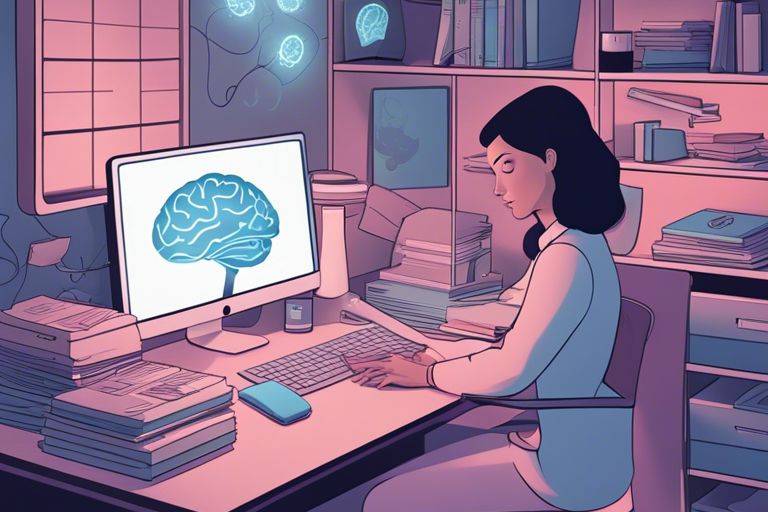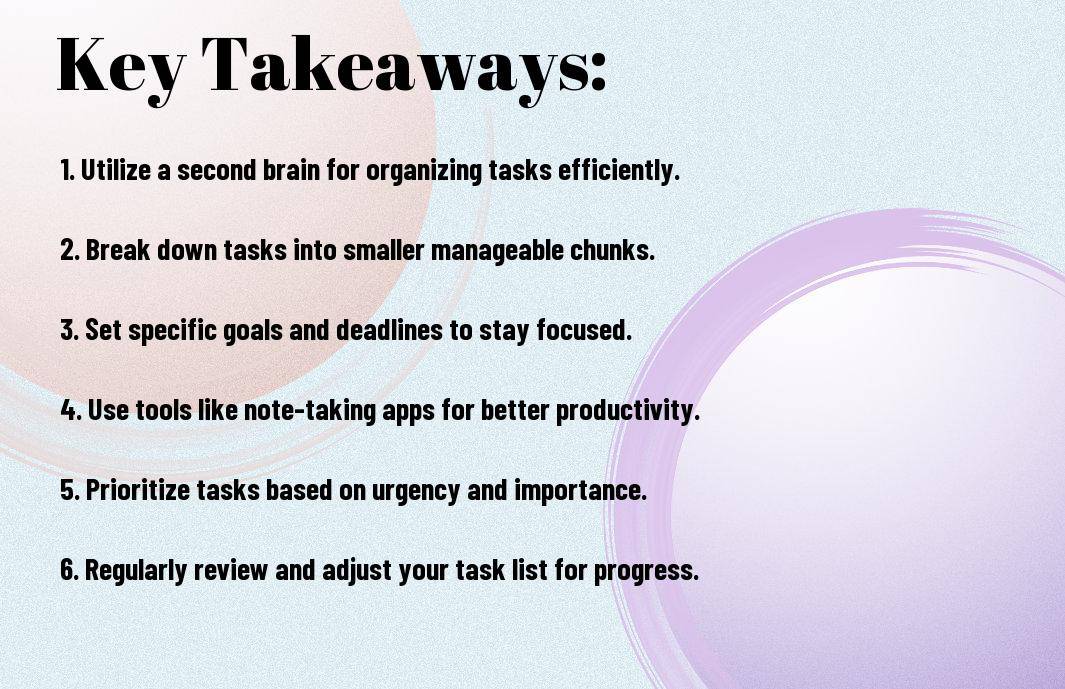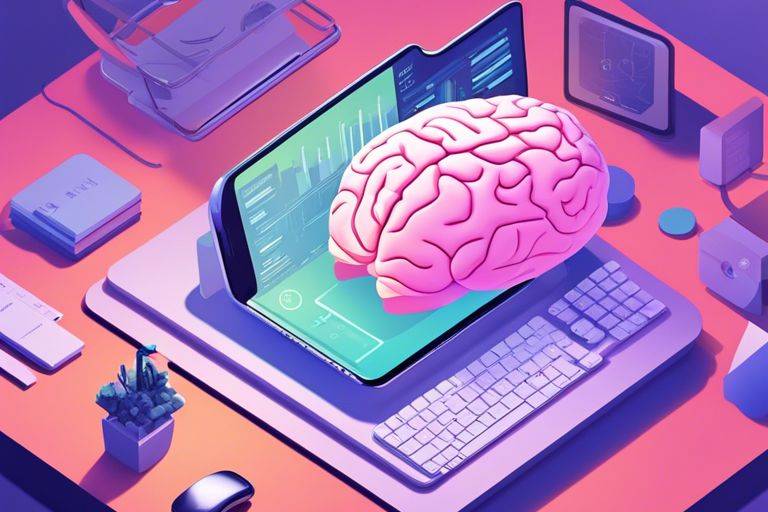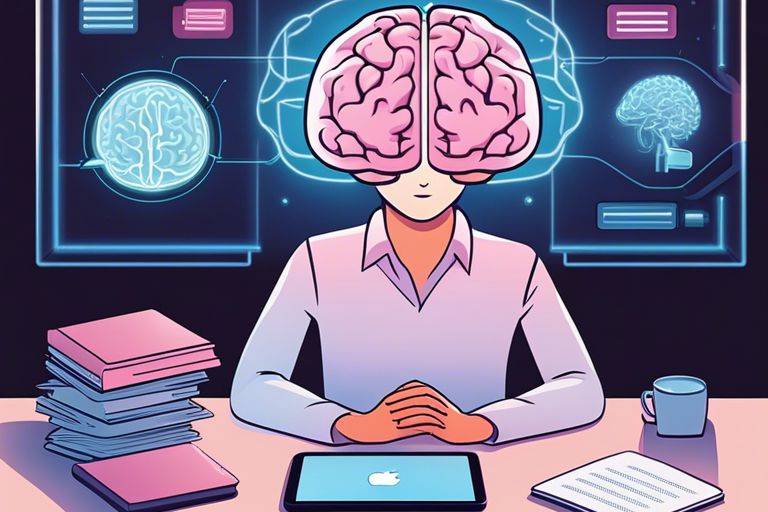
Newsletter Subscribe
Enter your email address below and subscribe to our newsletter

Enter your email address below and subscribe to our newsletter

It’s easy to get overwhelmed by tasks and deadlines, leading to procrastination and missed opportunities. A second brain can be a game-changer in staying organized and focused. By offloading thoughts and ideas into a digital tool, you free up mental space and create a clear plan of action. Boost your productivity and beat procrastination with the help of a second brain.

For many of us, procrastination is a familiar foe that can derail productivity and increase stress levels. It is a complex phenomenon influenced by various factors such as fear of failure, lack of motivation, and poor time management skills. Procrastination is often rooted in our emotions and mindset, leading us to delay tasks that may seem overwhelming or unenjoyable.
To understand why we procrastinate, it’s vital to consider the role of the brain in this behavior. The prefrontal cortex, responsible for decision-making and self-control, plays a crucial role in regulating our impulse to procrastinate. When we procrastinate, our brain prioritizes short-term rewards over long-term goals, leading to a cycle of delay and avoidance.
Procrastination can have negative effects on our well-being and success. It can lead to increased stress, decreased productivity, and a sense of guilt or shame. By understanding the science behind procrastination, we can develop strategies to overcome it and improve our focus and efficiency.
Many of us struggle with staying organized, focusing on tasks, and managing our time efficiently. This can often lead to procrastination and feeling overwhelmed by our daily responsibilities. However, there is a solution that can revolutionize how you work and help you beat procrastination – the Second Brain approach.
To put it simply, a Second Brain is a concept that involves creating a digital system to store and organize all your ideas, notes, tasks, and resources in one place. It acts as an external extension of your own brain, allowing you to offload information and free up mental space for critical thinking and creativity. By adopting this approach, you can capture everything from important thoughts to random ideas and retrieve them whenever you need, ensuring nothing falls through the cracks.
Theory suggests that the idea of a Second Brain originated from Tiago Forte, a renowned productivity expert. His concept revolves around the premise that our brains are not designed to store massive amounts of information or manage complex tasks alone. Instead, by utilizing a digital system as a Second Brain, individuals can enhance their cognitive abilities, improve decision-making, and boost overall productivity.
Now, in order to beat procrastination and stay organized, setting up a second brain is important. This external mind will help you offload information, ideas, and tasks, freeing up mental space and allowing you to focus on what truly matters.
Second Brain tools can range from digital applications to physical notebooks. Some popular digital tools include Notion, Evernote, and Microsoft OneNote. These tools are designed to help you collect, organize, and access information easily. A physical notebook or a bullet journal can also serve as an effective second brain, allowing you to jot down ideas and tasks on the go.
With the right tools in hand, creating your external mind involves a few key steps. Start by setting up categories or folders within your chosen tool to organize different aspects of your life. For example, you could have sections for work projects, personal goals, and creative ideas. Next, begin transferring information from your primary brain to your second brain, ensuring everything is captured and easily retrievable.
Mind that consistency is key when building your external mind. Make it a habit to update and review your second brain regularly to keep it current and relevant. Over time, you’ll find that having a second brain not only helps you stay on track with tasks and goals but also boosts your overall productivity and creativity.
Despite our best intentions, it’s easy to feel overwhelmed when we have endless to-dos swirling around in our minds. This is where the concept of a second brain comes in handy. By using tools like note-taking apps and task managers, you can create a system to capture and organize your thoughts and tasks efficiently.
Organizing your thoughts begins with capturing everything that comes to mind. Whether it’s a task that needs to be done, a brilliant idea, or a random thought, make sure to jot it down in your second brain. This capturing process ensures that nothing slips through the cracks and gives you a sense of relief knowing that all your thoughts are safely stored for later retrieval.
Any task or idea you capture should be accompanied by a clear intent. Take a moment to clarify why you’re capturing it and what action, if any, needs to be taken. This extra step not only helps you prioritize your tasks effectively but also prevents important details from getting lost in the shuffle.
When capturing information, remember to include key details such as deadlines, dependencies, and any other relevant information that will help you tackle the task efficiently. This level of clarity will go a long way in keeping you on track and ensuring that nothing falls through the cracks.

Not sure where to start on your tasks? Your second brain can help you prioritize like a pro. By organizing your thoughts and to-dos in one place, you can easily see what needs to be done first. Use categories or tags to rank tasks by importance or deadlines. This way, you can tackle high-priority items first and stay on track to meet your goals.
For a procrastination-free life, it’s vital to establish routines and habits using your second brain. Set reminders for daily tasks or create templates for recurring activities. By automating these processes, you can keep your productivity levels high and avoid wasting time on repetitive decision-making. Creating a solid routine can help you stay focused and maintain momentum in your work.
To take it a step further, probe your second brain to analyze your habits. Identify patterns that may lead to procrastination and find ways to eliminate or modify them. By being aware of your habits, you can better understand what triggers procrastination and develop strategies to overcome it. By transforming negative habits into positive ones, you can boost your productivity and achieve your goals more efficiently.

Once again, let’s explore into some advanced strategies for optimizing your second brain to stay organized and productive.
| An | In this digital age, integrating technology with your second brain can elevate your productivity to new heights. By using note-taking apps, task management tools, and cloud storage services, you can streamline your workflow and access information anytime, anywhere. |
Securing your digital brain is vital to protect sensitive information and prevent data loss. Make sure to regularly back up your data and use secure password management tools to safeguard your digital assets. Additionally, consider enabling two-factor authentication for an added layer of security.
Brain leaks and data breaches can pose serious risks to your personal and professional life. However, with proper security measures in place, you can enjoy the convenience and efficiency of a digital second brain without compromising your privacy.
Unlike traditional methods of goal-setting, utilizing a second brain can revolutionize how you stay on track with your objectives. By creating a digital workspace that stores all your thoughts, ideas, and action plans, you can easily review and revise your goals to ensure you’re making progress in the right direction.
Goals are dynamic entities that require regular review and adjustment to stay relevant and achievable. Your second brain acts as a repository of information that allows you to revisit your goals, assess your progress, and make necessary revisions to your objectives. With all your data organized and easily accessible, you can stay on top of your goals without feeling overwhelmed.
For accountability, your second brain serves as a reliable partner in achieving your goals. By documenting your commitments, milestones, and progress within your digital workspace, you create a sense of responsibility and ownership over your objectives. Your second brain can also remind you of deadlines, prompt you to take action, and provide a platform for reflection on your journey towards success.
Track Your second brain can help you track your performance, celebrate your achievements, and identify areas for improvement. By centralizing all your goal-related information in one place, you can easily monitor your progress and make informed decisions to stay on course. With the support of your second brain, you can overcome procrastination, maintain focus, and ultimately achieve your desired outcomes.
Drawing together all the strategies and techniques in How to Beat Procrastination. The 5 Minute Rule. article, it’s clear that developing a second brain can significantly help keep you on track and beat procrastination. By organizing your thoughts, tasks, and ideas in a structured manner, you can efficiently tackle your to-do list and stay focused on your goals.
Embracing the concept of a second brain allows you to free up mental space and enhance your productivity. By utilizing technology and tools to support your cognitive processes, you can streamline your workflow and overcome procrastination tendencies. With consistent practice and dedication, you can build a system that empowers you to achieve more and unleash your full potential.
A: Procrastination is the act of delaying or postponing tasks that need to be accomplished.
A: A second brain is a system or tool that can help you organize, prioritize, and manage your tasks and projects more effectively, reducing the chances of procrastination.
A: Using a second brain can help you stay focused, increase productivity, reduce stress, and achieve your goals more efficiently.
A: To set up a second brain system, you can use tools like note-taking apps, task managers, and digital calendars to organize your thoughts, ideas, and tasks in a structured way.
A: You can use strategies like breaking down tasks into smaller steps, setting deadlines, prioritizing tasks, and creating a daily schedule to beat procrastination with a second brain.
A: A second brain can help you improve time management skills by providing a systematic way to organize and allocate your time effectively, ensuring that you stay on track and meet deadlines.
A: Yes, using a second brain system can help you break down long-term goals into manageable tasks, track progress over time, and stay motivated to work towards achieving those goals consistently.